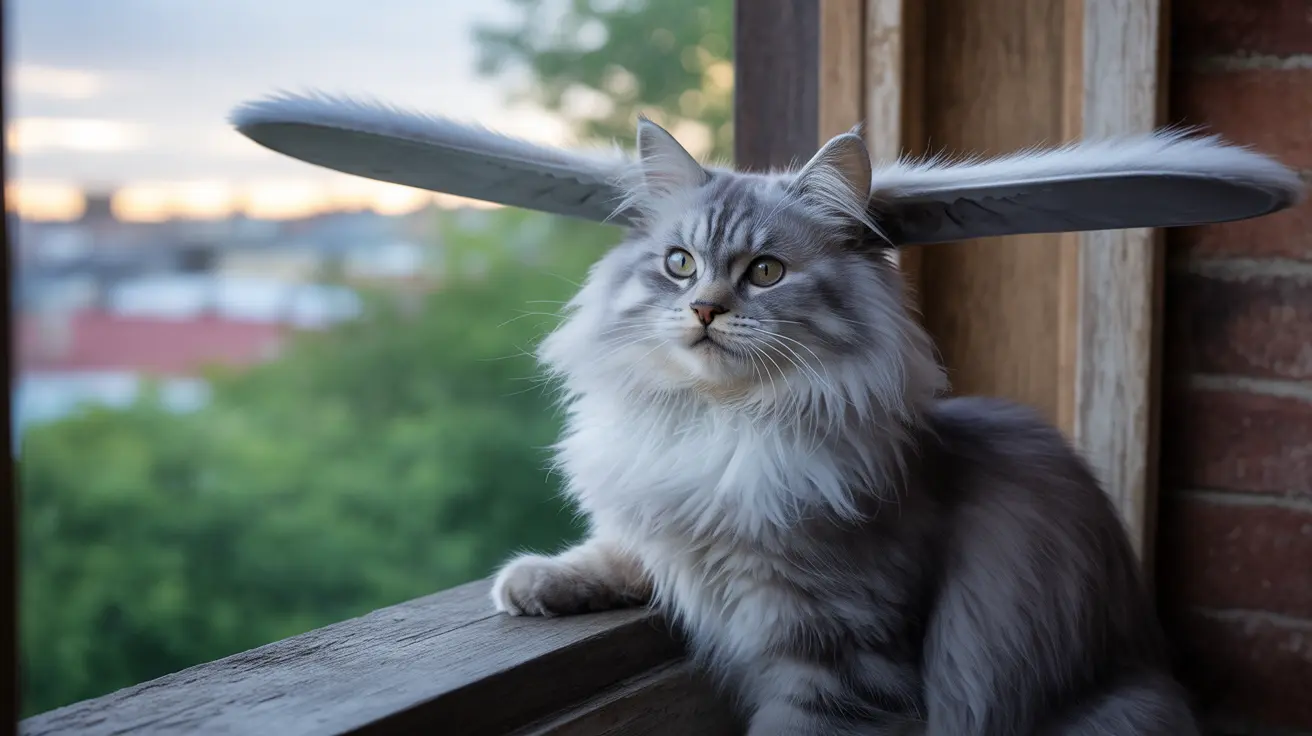If you've ever noticed your cat's ears flattening sideways like aircraft wings, you've witnessed what veterinarians and cat behaviorists call "airplane ears." This distinctive ear position is much more than just a cute facial expression – it's actually a crucial form of feline communication that every cat owner should understand.
In this comprehensive guide, we'll explore what airplane ears mean, why cats display this behavior, and how to respond appropriately when you notice this important body language signal. Understanding your cat's ear positions can help you better care for their emotional and physical well-being.
What Are Airplane Ears?
Airplane ears occur when a cat flattens their ears horizontally against their head, causing them to stick out to the sides like the wings of an aircraft. This position is distinctly different from ears that are pinned back or perked forward, and it often indicates that your cat is experiencing specific emotions or responding to environmental triggers.
This ear position is part of a cat's sophisticated body language system, which includes over 30 muscles dedicated to ear movement alone. The precision and control cats have over their ear positions make them excellent communicators of their emotional state.
Common Causes of Airplane Ears
Stress and Anxiety
The most common reason for airplane ears is anxiety or stress. Cats may display this ear position when:
- Encountering unfamiliar people or animals
- Experiencing changes in their environment
- Hearing loud or unexpected noises
- Feeling overwhelmed in new situations
Medical Issues
Sometimes, airplane ears can indicate underlying health concerns, including:
- Ear infections or mites
- General pain or discomfort
- Inner ear problems
- Neurological issues
How to Interpret Associated Body Language
Airplane ears rarely appear in isolation. Look for these accompanying signals to better understand your cat's state of mind:
- Crouched body position
- Puffed-up tail or fur
- Dilated pupils
- Tense muscles
- Quick, jerky movements
Responding to Airplane Ears
When you notice your cat displaying airplane ears, consider these appropriate responses:
- Give your cat space and time to calm down
- Remove potential stressors from the environment
- Provide a safe retreat area
- Monitor for additional signs of distress
- Consult a veterinarian if the behavior persists
Frequently Asked Questions
What does it mean when my cat has airplane ears, and how can I tell if they are stressed or scared?
Airplane ears typically indicate stress, fear, or anxiety in cats. You can confirm this by looking for other stress signals like dilated pupils, raised fur, or a crouched position. The more of these signs you observe together, the more likely your cat is experiencing stress.
Can airplane ears in cats indicate health problems like ear infections or pain?
Yes, persistent airplane ears can signal health issues, particularly when accompanied by head shaking, scratching, or ear discharge. If you notice these symptoms lasting more than a day or two, consult your veterinarian.
How should I respond if my cat shows airplane ears and other signs of anxiety or aggression?
Give your cat space, remove potential stressors, and provide a quiet, safe area for retreat. Avoid forcing interaction and wait until your cat shows signs of relaxation before approaching.
Are airplane ears in cats always a sign of negative emotions, or can they sometimes mean curiosity or playfulness?
While airplane ears typically indicate stress or anxiety, cats might occasionally display a milder version during play or intense focus. However, true airplane ears (fully flattened and sideways) usually signal caution or discomfort.
What are the key differences between airplane ears and other cat ear positions, and how do they help me understand my cat's mood?
Forward-facing ears typically indicate interest or contentment, while pinned-back ears signal fear or aggression. Airplane ears (sideways position) usually indicate a moderate level of stress or uncertainty, falling between these two extremes in terms of emotional intensity.
Understanding your cat's ear positions, especially airplane ears, is crucial for maintaining a strong bond with your pet and ensuring their wellbeing. By paying attention to this important body language signal, you can better respond to your cat's needs and help them feel safe and secure in their environment.






